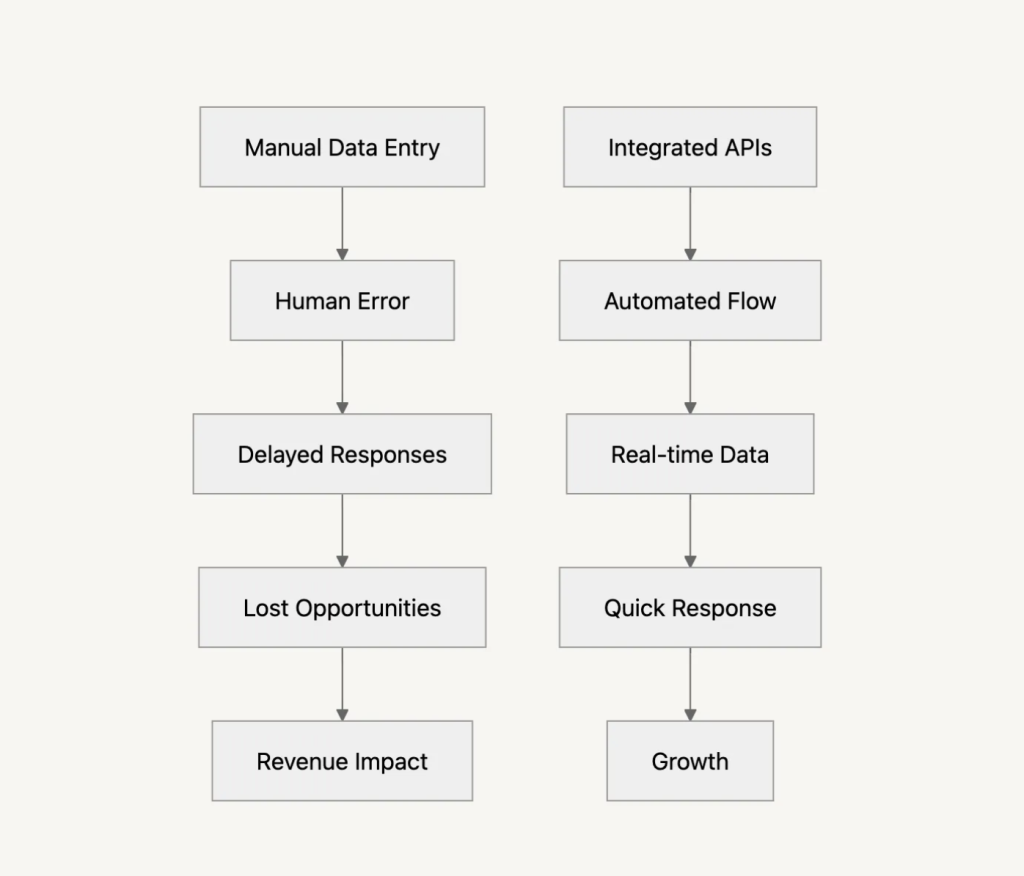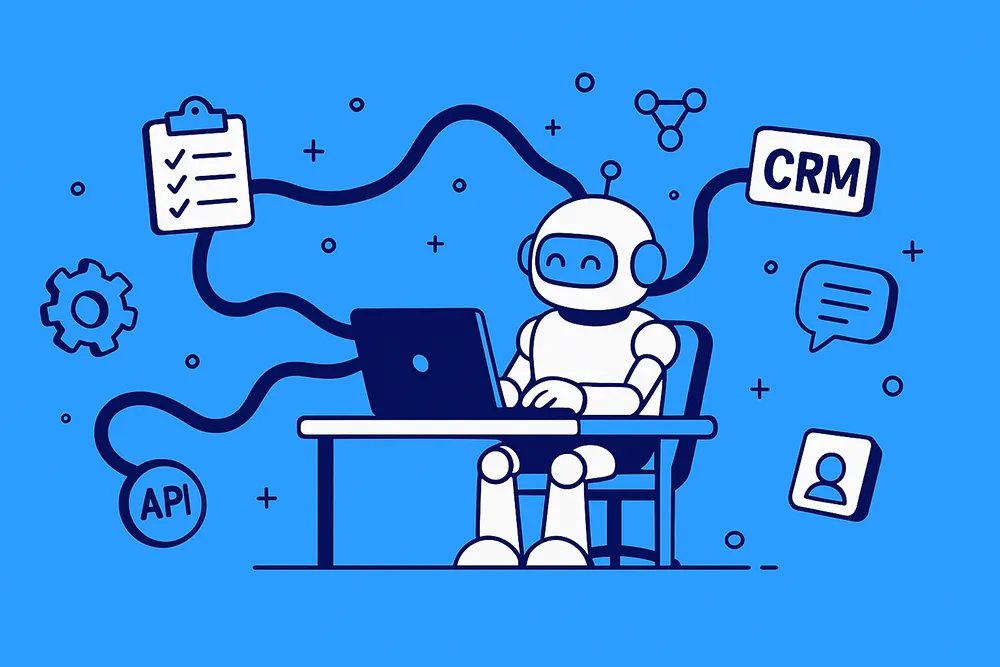Every evening, the operations manager at a growing e-commerce company spends hours exporting customer data to their CRM, only for errors to creep in. The support team scrambles between three different systems to answer basic customer questions, leading to long wait times. Meanwhile, sales reps are forced to juggle CRM and ERP screens, delaying deals and frustrating buyers.
In today’s digital ecosystem, this isn’t just inefficient, it’s a growth killer that’s costing you opportunities, customers, and revenue every single day. Let’s explore how API integrations transform these common challenges into competitive advantages.
The Integration Imperative
Modern businesses face a paradox: while specialized tools excel at specific tasks, this specialization creates data silos that hinder growth. According to recent industry analyses, businesses use an average of 37 different SaaS tools, each containing valuable customer data fragments.
💡 Key Insight: Companies with integrated CRM systems report 38% higher sales productivity and a 25% increase in customer retention rates.
The True Cost of Disconnected Systems

1. Foundation: Core Integration Types
| Integration Type | Purpose | Business Impact |
|---|---|---|
| Data Sync | Maintain consistency accross systems | Reduced errors by 92% |
| Process Automation | Streamline workflows | 70% faster response times |
| Real-Time updates | Enable immediate actions | 45% higher conversion rates |
| Custom Workflows | Address unique needs | 60% improved efficiency |
2. Strategic Implementation Approach
Phase 1: Assessment & Planning
- Audit existing systems and data flows
- Identify critical integration points
- Define success metrics and KPIs
- Map security requirements
Phase 2: Technical Architecture
Modern API integration architecture requires:

Phase 3: Implementation & Testing
- Develop integration endpoints
- Implement security protocols
- Conduct performance testing
- Monitor system impacts
Real-World Impact: Success Stories
Case Study: Financial Services Provider’s Digital Transformation
A leading financial services provider struggled with inefficient data management that was putting their customer relationships at risk. Every day, their team spent four hours manually entering customer data—leading to frequent errors and frustrated clients. Customer inquiries languished for up to 48 hours, causing escalations and threatening their reputation in a fast-moving market.
Working with Findmore Solutions, they implemented an API-driven automation strategy that transformed their operations. Manual data entry was completely eliminated, reducing error rates to just 0.1%. Customers now receive responses within 15 minutes—a 99% improvement in response time. The impact? A stunning 280% ROI in just six months, along with dramatically improved customer satisfaction scores and team morale.
Security Considerations
🔒 Essential security measures for API integrations:
- OAuth 2.0 authentication
- End-to-end encryption
- Rate limiting
- Access control
- Audit logging
Best Practices for Scalable Integration
- Design for Growth
- Use microservices architecture
- Implement caching strategies
- Plan for volume increases
- Maintain Data Quality
- Establish data validation rules
- Implement error handling
- Monitor data consistency
- Ensure Business Continuity
- Deploy redundant systems
- Implement failover mechanisms
- Monitor performance metrics
Measuring Integration Success
Key metrics to track:
- System uptime: Target 99.9%
- Data accuracy: Target 99.99%
- Response time: Under 200ms
- Error rate: Below 0.1%
- Cost per transaction: Track and optimize
Transform Your CRM Today
Your CRM should fuel growth, not create roadblocks. If disconnected systems are slowing you down, it’s time for seamless integration that drives results.
Stop losing time and opportunities to disconnected systems. Book your free 30-minute strategy session today, we’ll map out your integration plan and show you how to cut inefficiencies by up to 70%.



